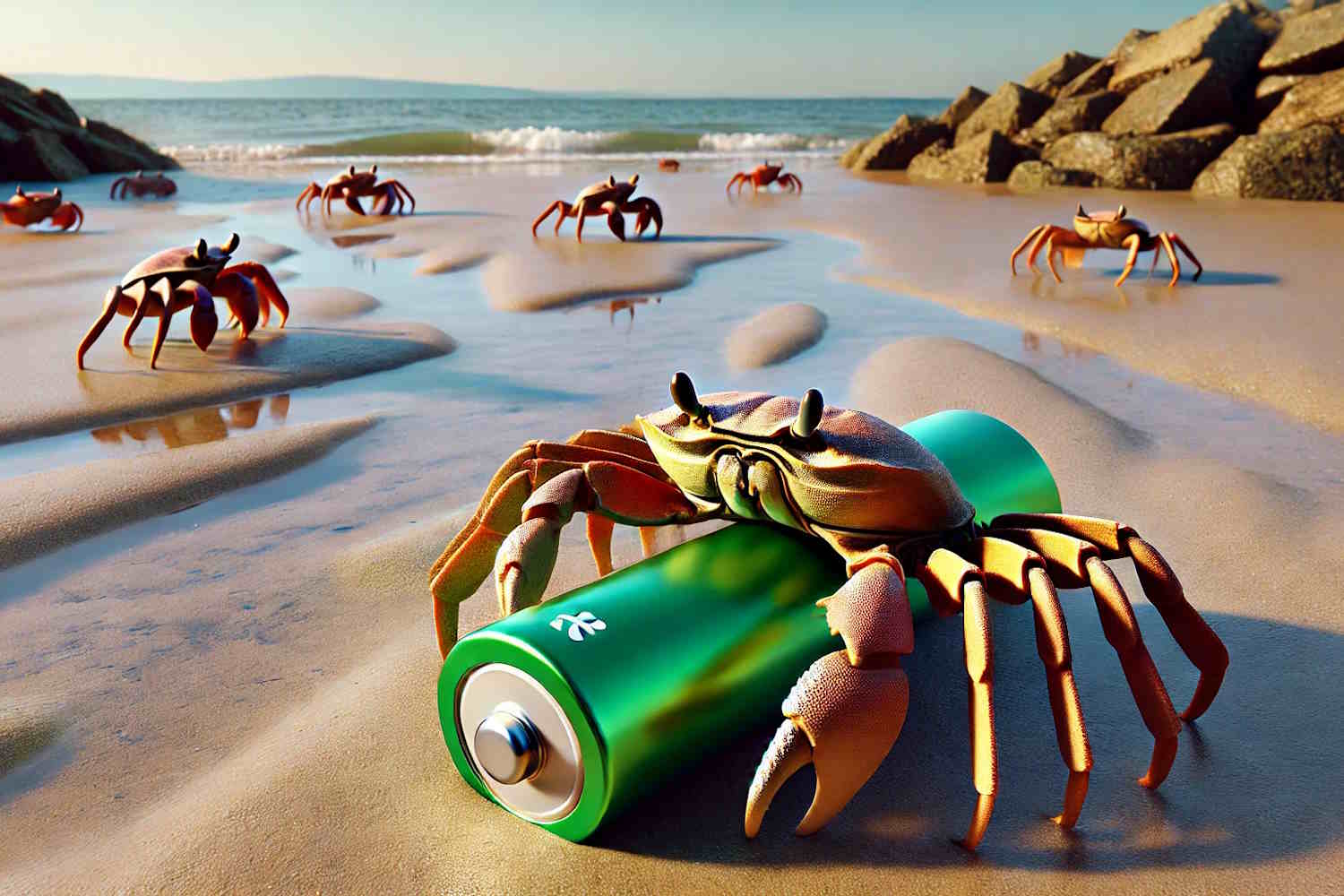Chitosan batteries, biodegradable and sustainable, transform crab shells into a precious resource: a revolution that supports renewable energy and reduces environmental impact

With their ruggedly beautiful shells, crabs have long been an emblem of marine biodiversity. Now, they’re playing a revolutionary new role in the field of renewable energy. With the help of chitosan, a biodegradable material derived from the shells of crabs, researchers have created a new generation of earth-friendly batteries. Such batteries solve the rapidly growing problem of electronic waste and turn trash into gold.
Traditional batteries, with complicated, non-recyclable parts, pose a big environmental threat. However, in contrast, chitosan-based batteries are very green. About two-thirds biodegradable, they will degrade in soil in only months, significantly reducing their footprint.
Beyond sustainability, performance is also out of this world. Made from zinc and chitosan, these batteries retain 99.7% capacity after 1,000 charge cycles. That makes them perfect for storing renewable energy-solar and wind power-and powering small electronic devices.
From ocean to land: transforming waste into resources
The food industry produces several million pounds of crustacean shells each year. While usually considered waste, science has found a way to make these leftovers the cornerstone of future technology. Chitosan is extracted from chitin in crab shells and processed into a gel-like electrolyte. This natural component enhances ion conductivity without using toxic substances or heavy metals.
The result is a battery that is as planet-friendly as it is efficient, truly embodying the principles of the circular economy. By using natural materials to create cleaner energy solutions, this innovation shows that even the humblest of marine organisms can inspire groundbreaking advancement. Crab shells, usually so unassuming, now represent sustainable progress.
Source: Cell
